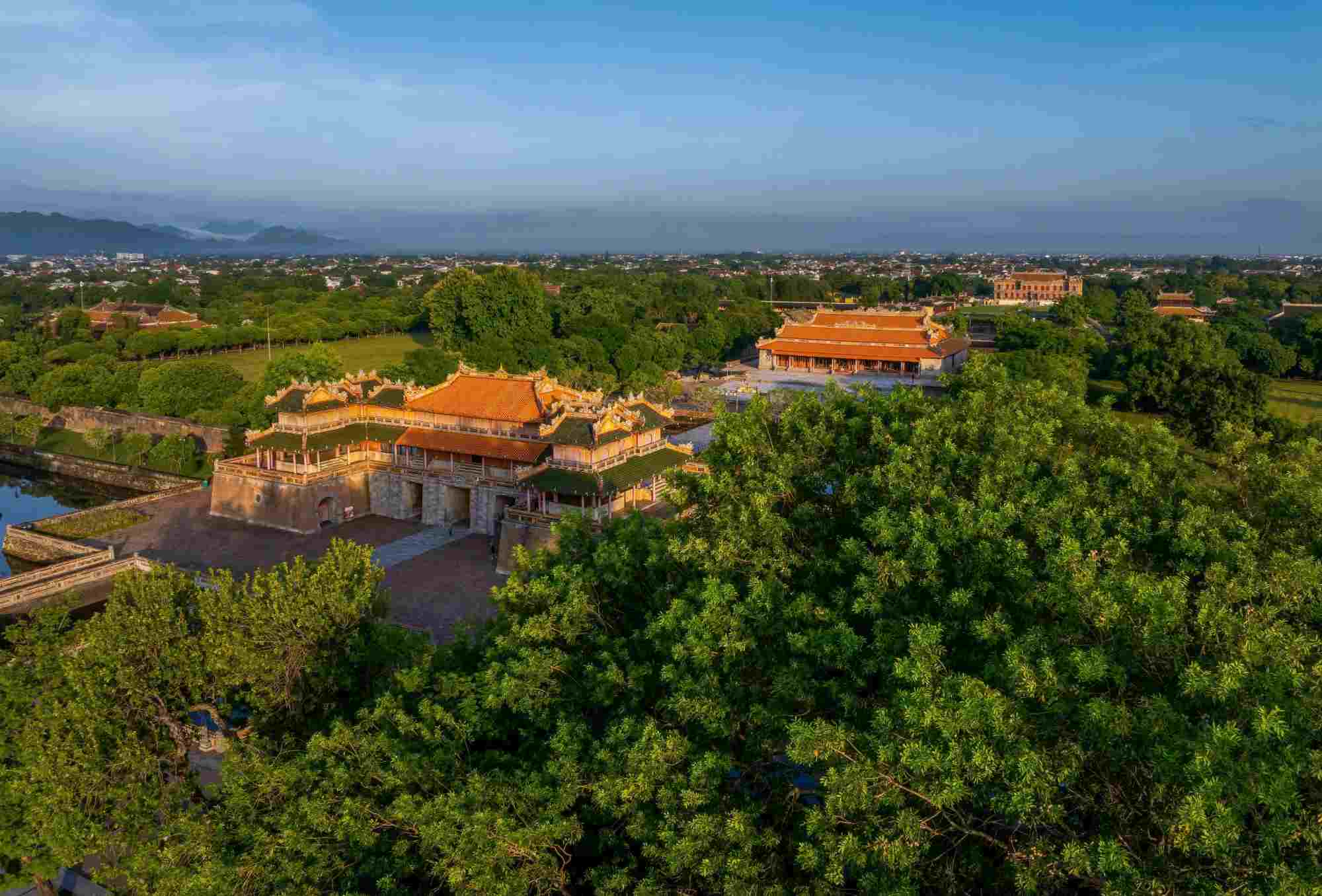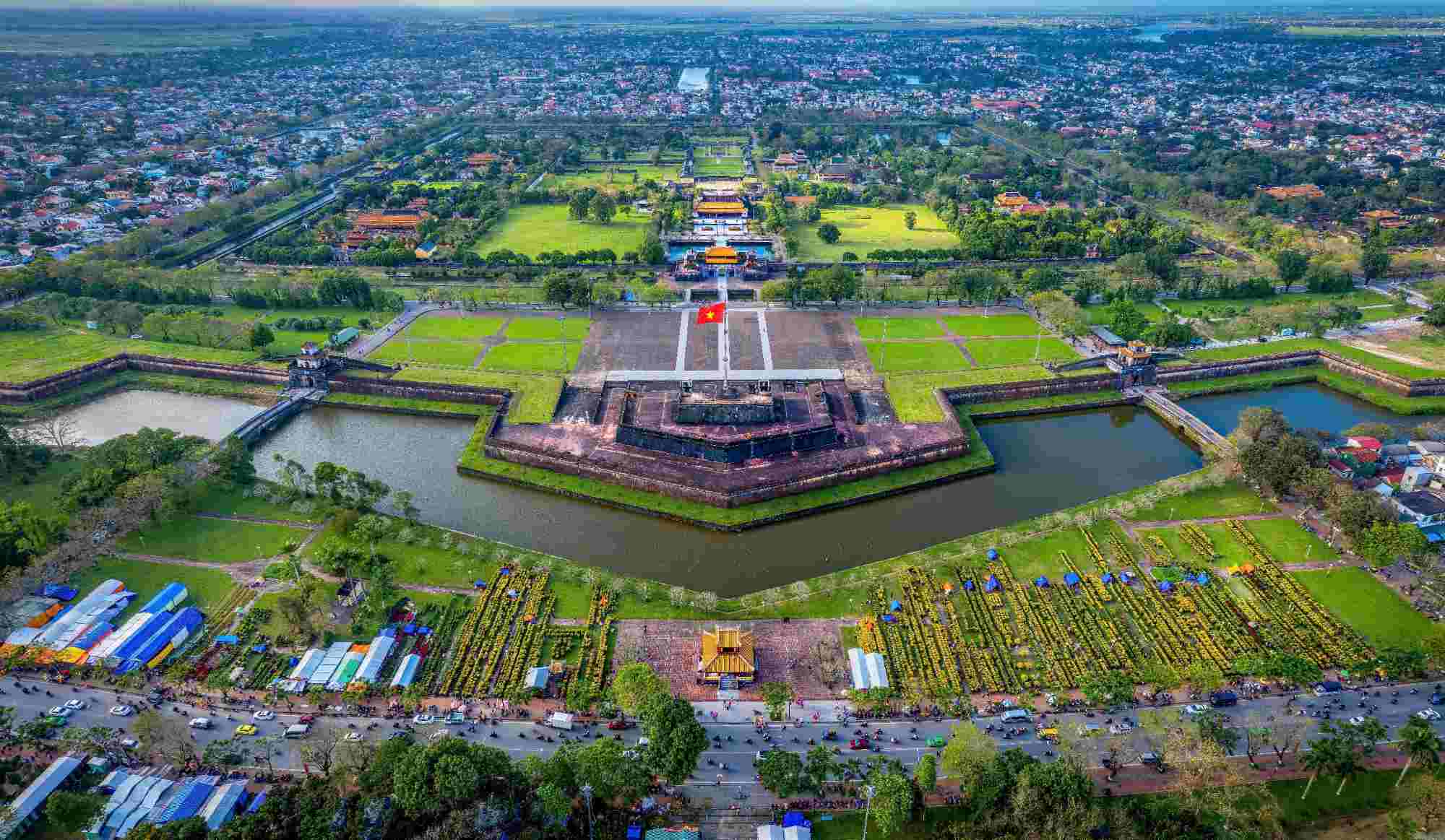Typical linking models
The Central region owns a series of famous destinations, from the world heritage such as the Hue Monuments Complex, Hoi An Ancient Town, My Son Sanctuary, to the world-famous beautiful beaches such as My Khe (Da Nang), Nha Trang (Khanh Hoa), or attractive bays such as Lang Co Bay, Xuan Dai Bay... In addition, intangible cultural heritages such as Hue Royal Court Music, clubs, Cau Ngu Festival, and hundreds of unique folk festivals also create a diverse and attractive cultural picture.
Located between the North and South, the Central region, inherited the cultural interference of both regions, and it is this harmonization that makes the central culture become multi -layered and colorful. From the architectural art of the Nguyen Dynasty in Hue, the ancient space of Hoi An, to the tone of Cham-pa, it still imprinted in My Son Sanctuary, all contributing to creating a unique identity for the region.


This is also a valuable "resurce" for localities to cooperate and build inter-regional tourism product packages, instead of disjointed and disjointed development. And in fact, in recent years, the Central provinces have clearly recognized the potential and tried to promote linkages.
Many joint tourism promotion programs are organized, such as tourism development linkage forums between Hue, Da Nang, Quang Nam, Quang Ngai; workshops connecting Hue - Hoi An - My Son cultural heritage; or the tour package "1 itinerary - 3 destinations" implemented by travel agencies. Thereby, domestic and international tourists can explore the series of journeys: Ancient Hue, poetic Hoi An, mysterious My Son and beautiful beaches stretching along the Central Coast.
In particular, the Hue - Da Nang - Hoi An heritage tourism link is the most successful connection today. Tourists to Hue can visit Da Nang in just a few hours through Hai Van tunnel, then continue the journey to Hoi An, Cu Lao Cham. Localities often coordinate to organize joint tours, promotional programs, tourism stimulus, and exchange information and data on the tourist market. The Da Nang International Fireworks Festival (DIFF) and Hue Festival also create an interactive flow of visitors between these two cultural cities.
Next is the journey "The Central Heritage Road". Previously, the Vietnam Tourism Administration initiated the tourism route "Heritage Road" connecting Hue - Hoi An - My Son - Phong Nha - Ke Bang, to help international and domestic tourists explore a series of world heritage values. This model is still being repeated and adjusted to suit today's transport infrastructure, encouraging travel businesses to build package tours.
There are still many challenges
Despite the typical models, the link of the central provinces still faces some challenges. The first is the incomplete inter -regional infrastructure, the highways have not been linked smoothly from Quang Binh to Khanh Hoa; Many seaports and airports have not met the peak season capacity, leading to a time -consuming journey. Up to now, the central provinces have not had an effective policy coordination mechanism. This makes the majority of tourism -cultural projects only stop at "cooperation agreement" or "workshop", but not really implemented. This leads to the situation of tourism products of many localities developing in the direction of "strong people doing", lacking synchronously in promoting and building regional brands. Each locality wants to make its own mark, but has not cooperated deep to share guests, market data and build diverse experiences throughout the region.
For the Central region to truly make a breakthrough in tourism - cultural linkages, localities need to work together to find synchronous solutions. First is to complete the transport infrastructure by speeding up the construction and upgrading of the North-South expressway section through the Central region, expanding strategic airports such as Da Nang, Chu Lai, Phu Bai. Develop seaports to serve international cruise ships to welcome cruise ship visitors. Only then will inter-regional tours be more convenient, reducing costs, and increasing the competitiveness of tourism products.
In addition to the separate planning of each province, there needs to be a linked planning to avoid duplication of products and waste resources. The provinces should join hands to build a common brand, for example the "China - Heritage Land strip", with a common image, slogan and international promotion strategy. At the same time, it called on large tourism businesses, both domestic and international, to accompany in improving service quality, building modern resorts, theme parks, and interactive museums. At the same time, there are specific incentive policies, both ensuring business benefits and preserving cultural and natural heritage.
It can be said that the future of the Central region depends on how the provinces join hands to build a unified cultural and tourism space, both rich in identity and sustainability. If the localities closely coordinate, share their benefits, invite the participation of businesses and the community, the Central region will not only be the "heart" of geography connecting the two heads of the country, but also becoming a bright spot on tourism development and cultural exchange in the region. Above all, it is also a way for the people of the Central region to firmly escape poverty, rise to assert an important role in the common picture of Vietnam's economy.










